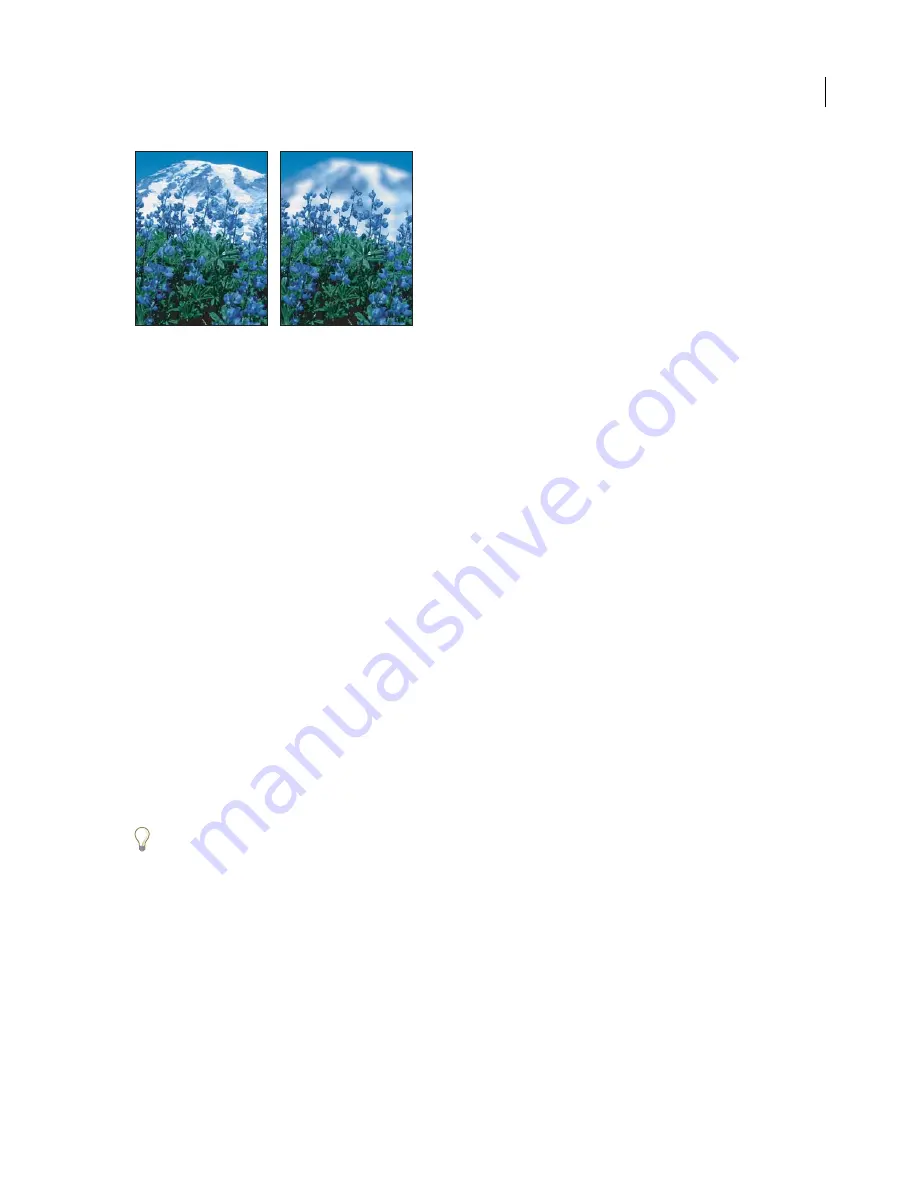
516
ADOBE PHOTOSHOP CS2
User Guide
Before (left) and after (right) using the Lens Blur filter; the background is blurred but foreground stays sharp
Note:
To apply a Blur filter to the edges of a layer, deselect the Preserve Transparency option in the Layers palette.
Average
Finds the average color of an image or selection, and then fills the image or selection with the color to
create a smooth look. For example, if you select an area of grass, the filter changes the area into a homogeneous patch
of green.
Blur and Blur More
Eliminate noise where significant color transitions occur in an image. Blur filters smooth
transitions by averaging the pixels next to the hard edges of defined lines and shaded areas. The effect of the Blur
More filter is three or four times stronger than that of the Blur filter.
Box Blur (Photoshop only)
Blurs an image based on the average color value of neighboring pixels. This filter is
useful for creating special effects. You can adjust the size of the area used to calculate the average value for a given
pixel; a larger radius results in greater blurring.
Gaussian Blur
Quickly blurs a selection by an adjustable amount.
Gaussian
refers to the bell-shaped curve that is
generated when Photoshop applies a weighted average to the pixels. The Gaussian Blur filter adds low-frequency
detail and can produce a hazy effect.
Lens Blur (Photoshop only)
Adds blur to an image to give the effect of a narrower depth of field so that some
objects in the image stay in focus and others areas are blurred. You can use a simple selection to determine which
areas are blurred, or you can provide a separate alpha channel
depth map
to describe exactly how you want the blur
added.
The Lens Blur filter uses the depth map to determine the position of pixels in an image. With a depth map selected,
you can also use the cross-hair cursor to set the starting point of a given blur. You can use alpha channels and layer
masks to create depth maps; black areas in an alpha channel are treated as though they’re at the front of the photo,
and white areas are treated as if they’re far in the distance.
To create a gradual blurring (none at the bottom to maximum at the top), create a new alpha channel and apply a
gradient so that the channel is white at the top of the image and black at the bottom. Then select the Lens Blur filter
and choose the alpha channel from the Source pop-up menu. To change the direction of the gradient, select the Invert
check box.
The way the blur appears depends on the iris shape you choose. Iris shapes are determined by the number of blades
they contain. You can change blades of an iris by curving them (making them more circular) or rotating them. You
can also reduce or magnify the preview by clicking the minus button or the plus button. See also “To use the Lens
Blur filter” on page 517.
Motion Blur
Blurs in the specified direction (from –360º to +360º) and at a specified intensity (from 1 to 999). The
filter’s effect is analogous to taking a picture of a moving object with a fixed exposure time.
Содержание PHOTOSHOP CS2
Страница 1: ...Chapter 1 Copyright User Guide ...






























